Prolonged Exposure
The Round Tower, May 2024
Together with: Lara Ostan, Trine Struwe, Axel Burendahl, Stina Vogt, Ditte Holm Bro, Liv Duvå, Louis André Jørgensen, Kristoffer Raasted, Ragnhild May, Tove Storch, Camilla Kold, Niels Munk Plum together with bed for emotional support made by Anna Rieder, Sidsel Ana Welden og Olivia Lund.
The exhibition is based on the artist’s own experience as a former psychiatric patient. The title refers to the treatment method Prolonged Exposure Therapy, in which the patient tells the story of their trauma repeatedly to process it.
Each therapy session is recorded as the patiens subsequently is instructed to listen to it daily, as to make it into a narrative which is possible to distance oneself from.
All the works take their departure in a search for hope as a transformative force with slips and slides into existance.
The focal point of the show is a video work, where curtains hide the image, only showing the subtitles. The work becomes text and sound of a recorded conversation between Hald and her therapist, where Hald is asked to remember and retell the rape she survived from.
The conversation starts from when the rape has already occured, and the conversation focus on how to live on from that emotional and physical space. The show is seaking hope through art and dialogue.
Rape and abuse has become part of a more public conversation in recent
years, yet has not been portrayed in fine art in an Scandinavian context. Hald is interested in nuancing both the survivor and the abuser in Prolongued Exposure.
The show includes Hald’s own friends, primarily visual artists and writers, those who helped her through the crisis. They become co-creators of the exhibition as they contribute their own works in response to her course of the illness. The lonileness which is so inherent in sickness and especially in relation to taboos, was sought to be meet with openess and kindness.


Review in Danish in Information by Ida Marie Hede https://www.information.dk/kultur/anmeldelse/2024/05/ saarbare-motiver-kraever-tankens-skarphed- viser-to-kunstudstillingerInterview with Karin Hald aboout the exhibition by Mette Garfield, Bastard Blog
https://bastard.blog/karin-hald-om-forlaenget-eksponering/
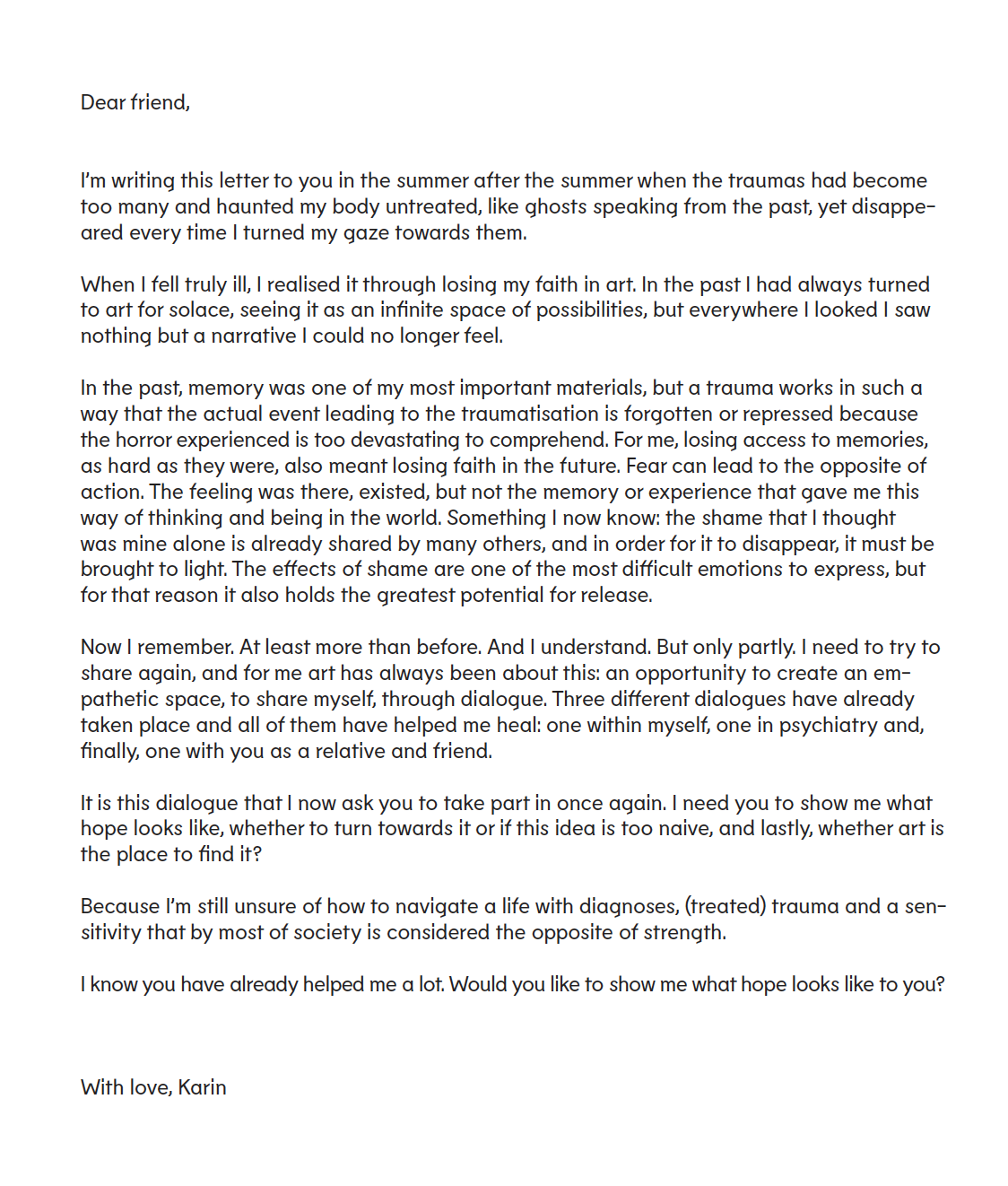


Light Transforming through the System
Materials: anthotype made with turmeric
Self-portraits taken in direct sunlight, which illuminates, warms and blinds. In this work, Hald explores her healing process as a continuous, ever-moving transformation.
Anthotypes cannot be permanently set, and thus, the images will fade and disappear over time.
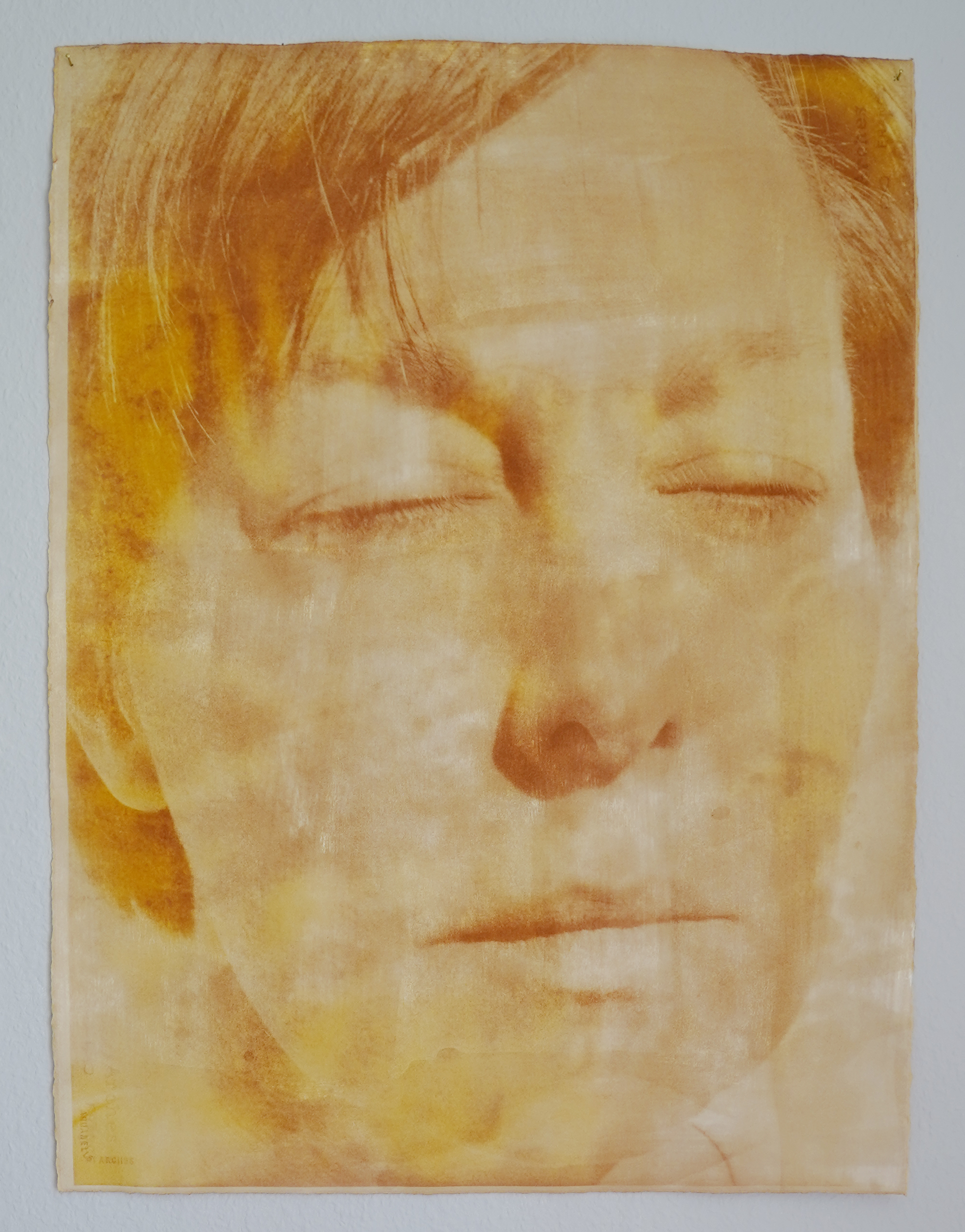

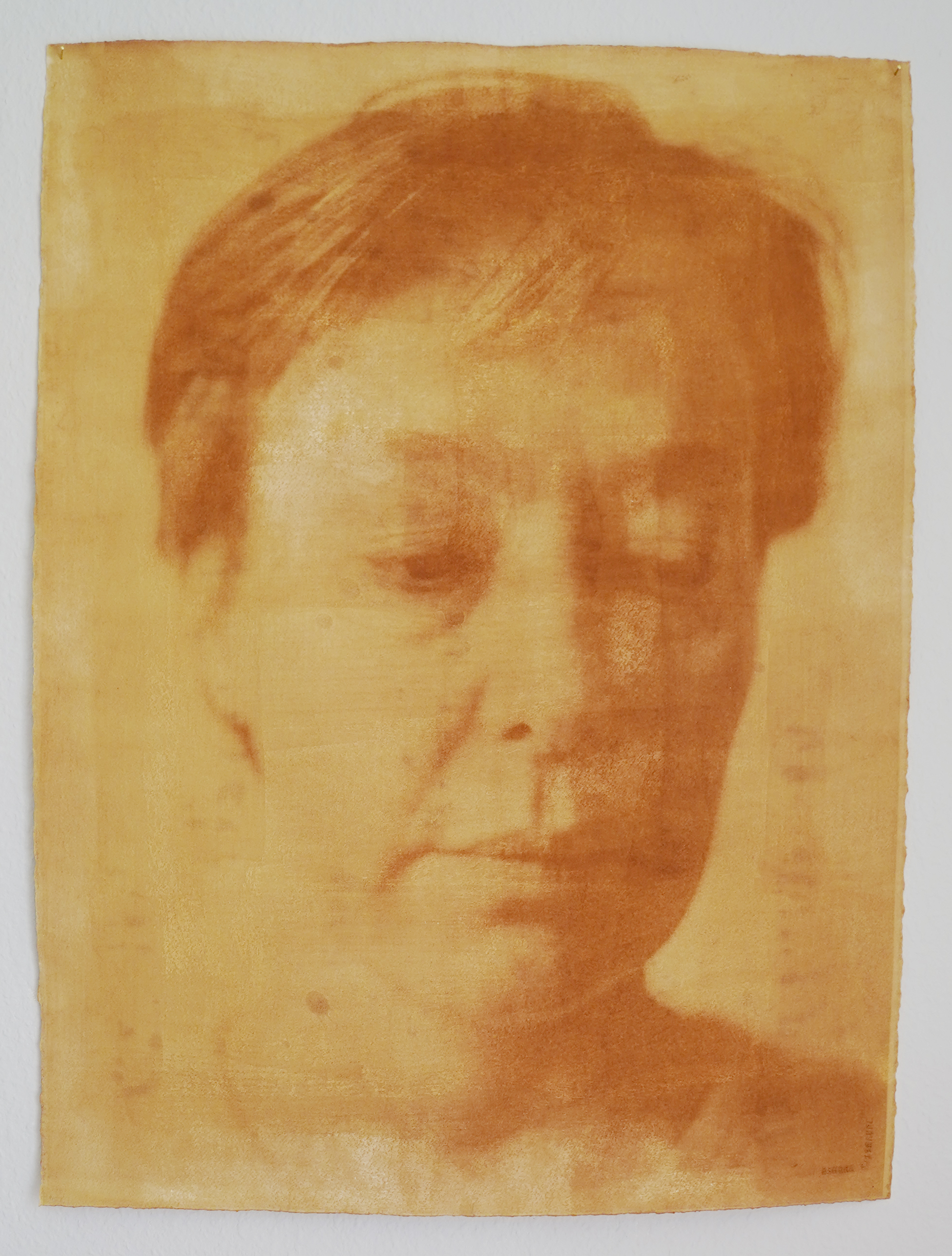
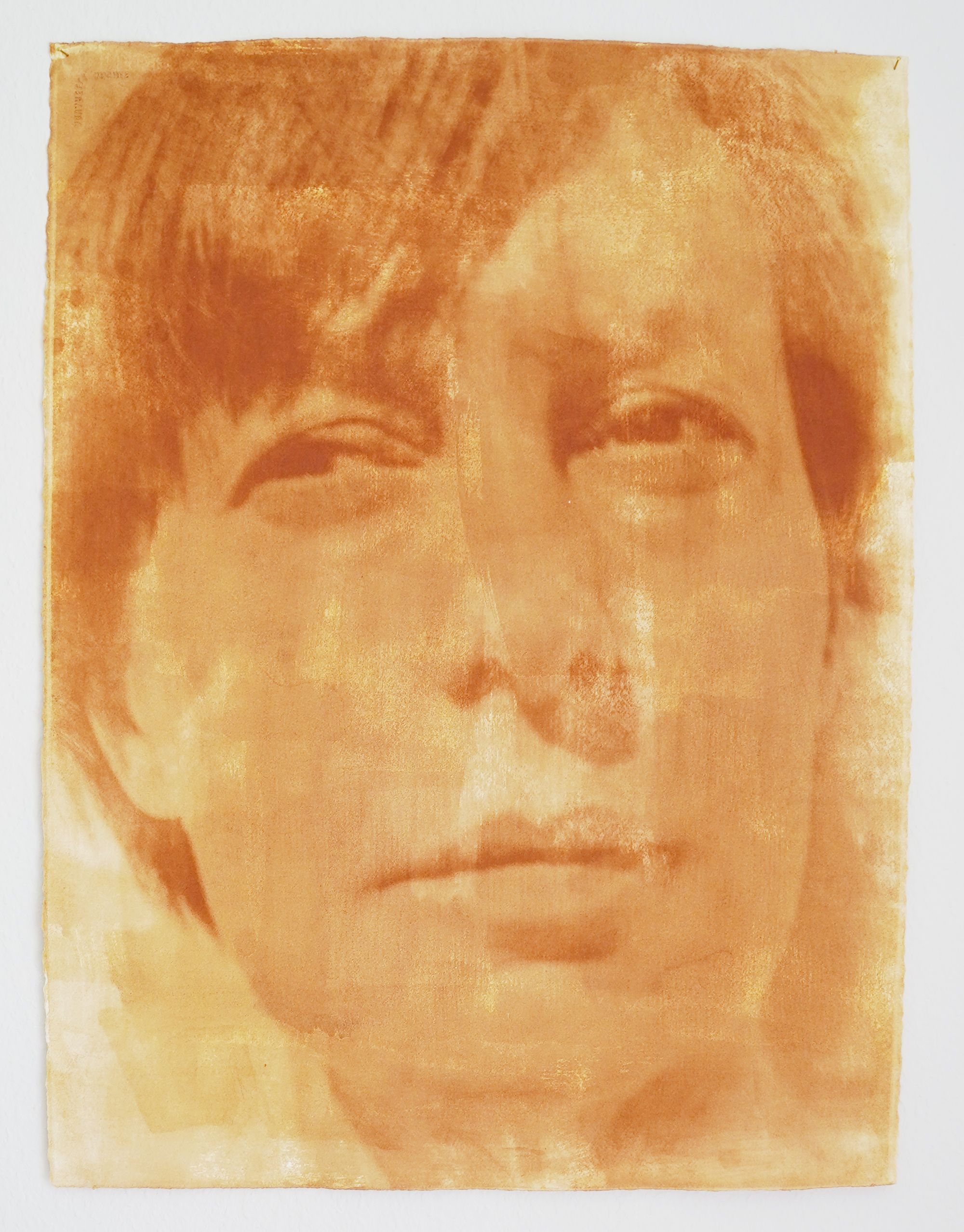
Moving into Sunlight Against the Body of the Woman that I Love
Materials: Video, flowers, labor of love
The title of the work comes from Audre Lorde’s essay “Uses of the Erotic”: The Erotic as Power”. On the film's audio track the essay is read aloud by Lorde herself, while Hald, her partner and their dog all appear in the frame. They walk about their garden where a new perennial bed is being planted.
Part of Hald’s healing process included moving to the countryside, where the garden became a focal point in her day-to-day life. In “Moving into Sunlight against the Body of the Woman that I Love”, flowers are planted for a future that has only partially blossomed.



Louis André Jørgensen
Jeg prøver at være stolt over den glæde jeg finder / I try to be proud of the joy I find
Materials: Soil, flint, text, grass seeds and henbane.
On a bare mound of earth, a flint stone roosts on seeds of grass and henbane. It has cracks and holes, traces of thousands of years of travel. Can anything grow here? Nowadays we don't see stones as living things, but theologian Mads Lidegaard writes about how people used to believe they grew from the ground: (...) “Many also believed that they had young: These were all the small stones that surrounded the big ones.” Henbane, also known as Stinking Nightshade, is a psychoactive medicinal plant. Its seeds lie dormant in the ground for hundreds of years before they suddenly germinate. Late bloomers. This might happen if the ground is disturbed, such as by archaeological digs. It is almost as though they become re-energised by the discovery of what was hidden all that time.
Jeg prøver at være stolt over den glæde jeg finder / I try to be proud of the joy I find
Materials: Soil, flint, text, grass seeds and henbane.
On a bare mound of earth, a flint stone roosts on seeds of grass and henbane. It has cracks and holes, traces of thousands of years of travel. Can anything grow here? Nowadays we don't see stones as living things, but theologian Mads Lidegaard writes about how people used to believe they grew from the ground: (...) “Many also believed that they had young: These were all the small stones that surrounded the big ones.” Henbane, also known as Stinking Nightshade, is a psychoactive medicinal plant. Its seeds lie dormant in the ground for hundreds of years before they suddenly germinate. Late bloomers. This might happen if the ground is disturbed, such as by archaeological digs. It is almost as though they become re-energised by the discovery of what was hidden all that time.


Tove Storch
Untitled
Materials: Aluminium, acrylic
Hard materials meet soft feminine colours in Storch’s sculptural shapes. They were originally created for a specific space – not the Library Hall – and have now been relocated. Whereas before they appeared tense and trapped, in “Prolonged Exposure” they have space to unfold and find themselves somewhere between their previous form and the one they are about to take.
Untitled
Materials: Aluminium, acrylic
Hard materials meet soft feminine colours in Storch’s sculptural shapes. They were originally created for a specific space – not the Library Hall – and have now been relocated. Whereas before they appeared tense and trapped, in “Prolonged Exposure” they have space to unfold and find themselves somewhere between their previous form and the one they are about to take.


Lara Ostan & Karin Hald
What you are afraid of has already happened
Materials: Watercolour drawing
With simple instructions based on Hald’s personal narrative and Ostan’s work as a choreographer and body therapist, this work invites the viewer to move their body in a way that calms the nervous system and helps them stay present in the exhibition space.
What you are afraid of has already happened
Materials: Watercolour drawing
With simple instructions based on Hald’s personal narrative and Ostan’s work as a choreographer and body therapist, this work invites the viewer to move their body in a way that calms the nervous system and helps them stay present in the exhibition space.
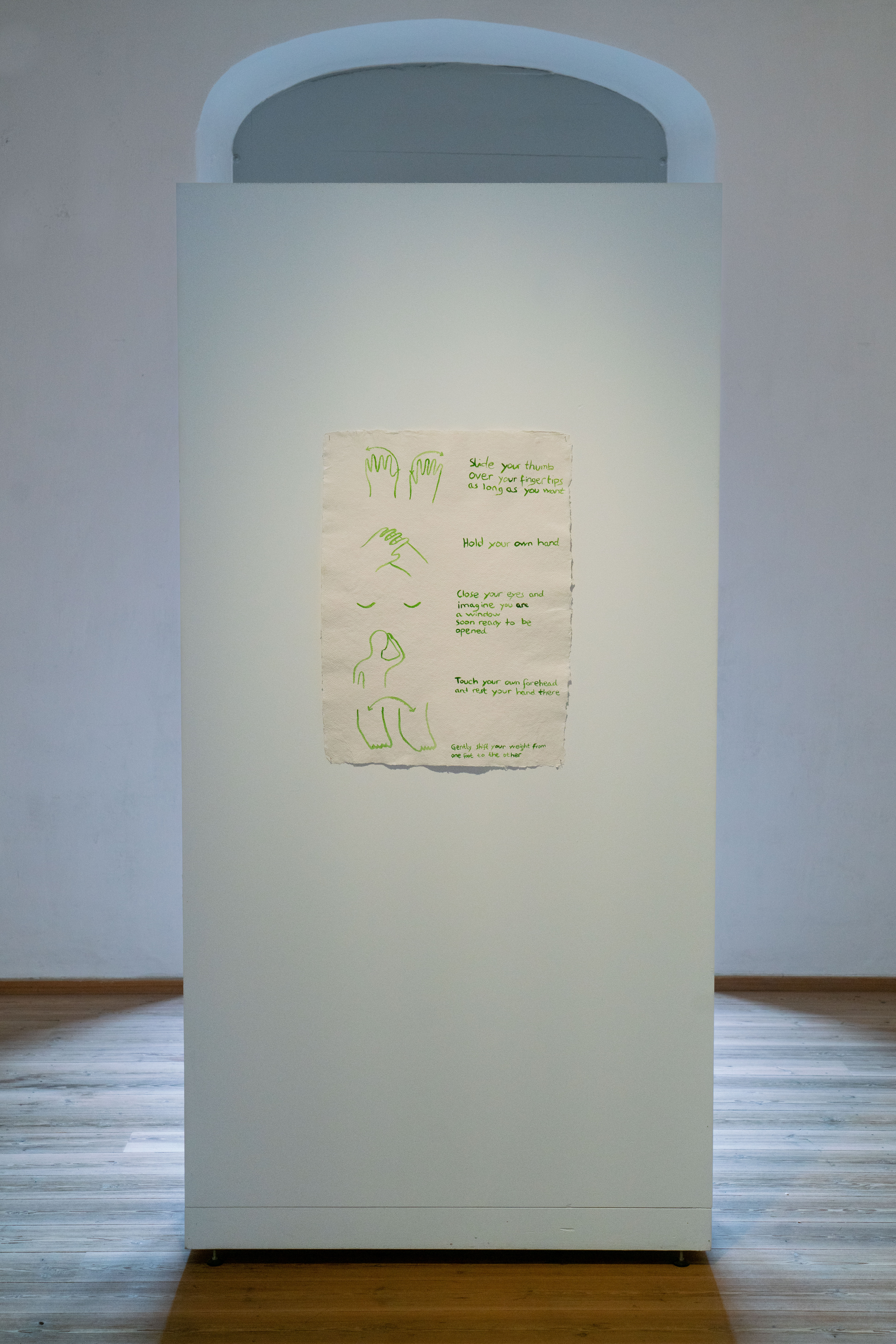

Ragnhild May
Archive of Potential Memories
Materials: Glass, mirror, LED light
“Come with me honey I’m your sweet sugar candy man”
I'm lying in my bed in my preteen room looking up at the ceiling painted with clouds and blue sky. I switch off the light, and in the darkness the constellation created by the glowing stars appears. I have just had a birthday party with fizzy pop and a disco.
Pop songs can serve as collective memories. Just like Proust's madeleine, hearing a snippet of lyrics from a pop song can unlock the memories you associate with it. A karaoke box is a potential archive of memories, and singing karaoke is a way to feel and relive them.
Archive of Potential Memories
Materials: Glass, mirror, LED light
“Come with me honey I’m your sweet sugar candy man”
I'm lying in my bed in my preteen room looking up at the ceiling painted with clouds and blue sky. I switch off the light, and in the darkness the constellation created by the glowing stars appears. I have just had a birthday party with fizzy pop and a disco.
Pop songs can serve as collective memories. Just like Proust's madeleine, hearing a snippet of lyrics from a pop song can unlock the memories you associate with it. A karaoke box is a potential archive of memories, and singing karaoke is a way to feel and relive them.
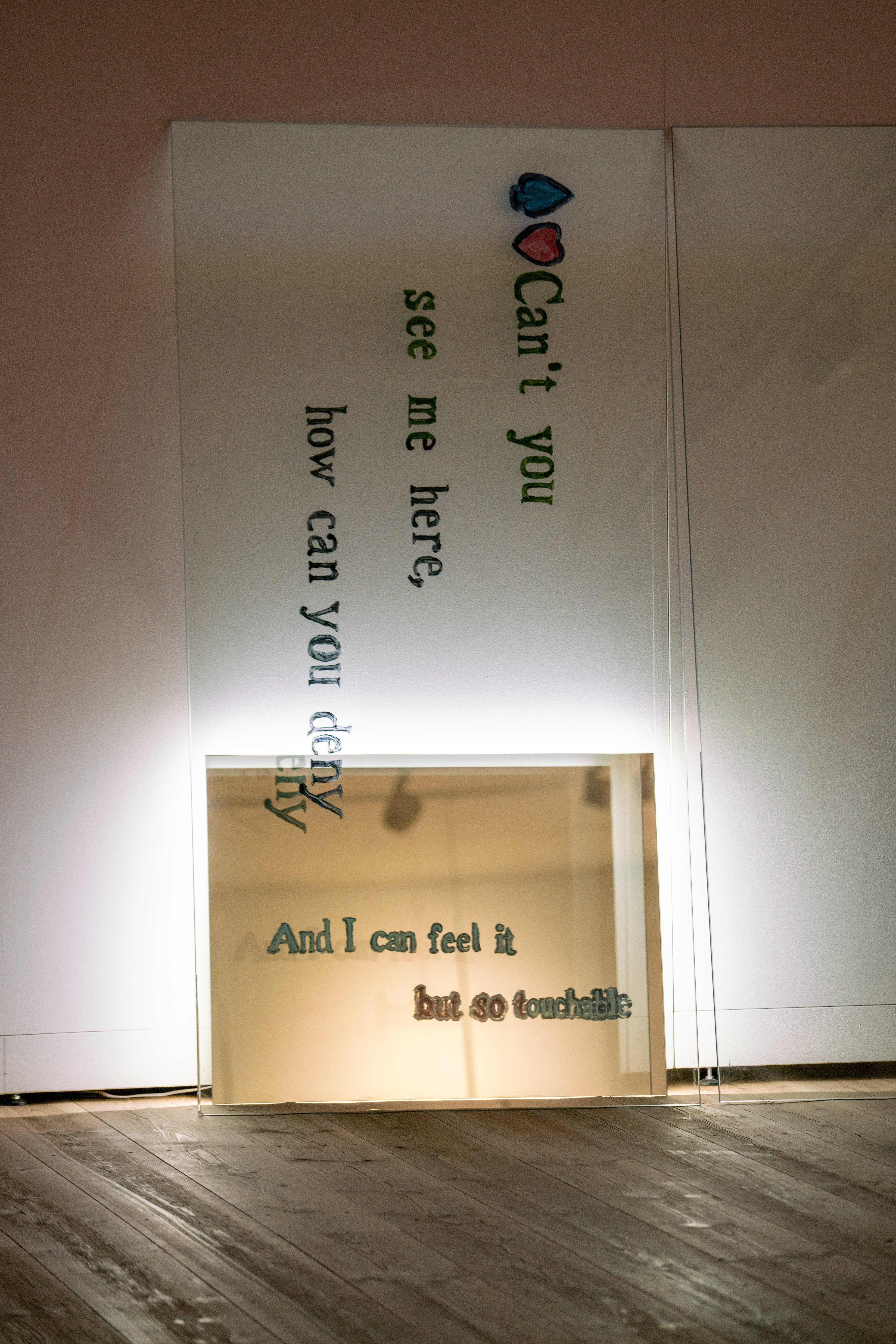

Kristoffer Raasted
Button
Materials: Ceramic
The piece is part of a larger body of work titled “Synchronise Your Lips with Mine”. The motifs include buttons, mouths and letters, and these are hand-modelled in black sculpting clay and fired at 1260°. The title refers to lip-syncing, demonstrations and kisses. The button is displayed as a scaled-up relief. A button is like a coin, but holds no value, and there is something hopeful and functional about the worthless button as the artist reflects on utilitarian and visual art, the monetary value of artworks and art as currency.
Untitled
Materials: Paper, pencil
In a series of sketch-like, non-figurative pencil drawings created with eyes closed, the relationship between the graphic composition, drawing and sound is explored.
The work is unframed, leaning against a shelf. This lends the drawing a sculptural quality, and the small format coupled with the unfiltered intimacy that occurs without the frame brings the viewer closer to the work.
Button
Materials: Ceramic
The piece is part of a larger body of work titled “Synchronise Your Lips with Mine”. The motifs include buttons, mouths and letters, and these are hand-modelled in black sculpting clay and fired at 1260°. The title refers to lip-syncing, demonstrations and kisses. The button is displayed as a scaled-up relief. A button is like a coin, but holds no value, and there is something hopeful and functional about the worthless button as the artist reflects on utilitarian and visual art, the monetary value of artworks and art as currency.
Untitled
Materials: Paper, pencil
In a series of sketch-like, non-figurative pencil drawings created with eyes closed, the relationship between the graphic composition, drawing and sound is explored.
The work is unframed, leaning against a shelf. This lends the drawing a sculptural quality, and the small format coupled with the unfiltered intimacy that occurs without the frame brings the viewer closer to the work.

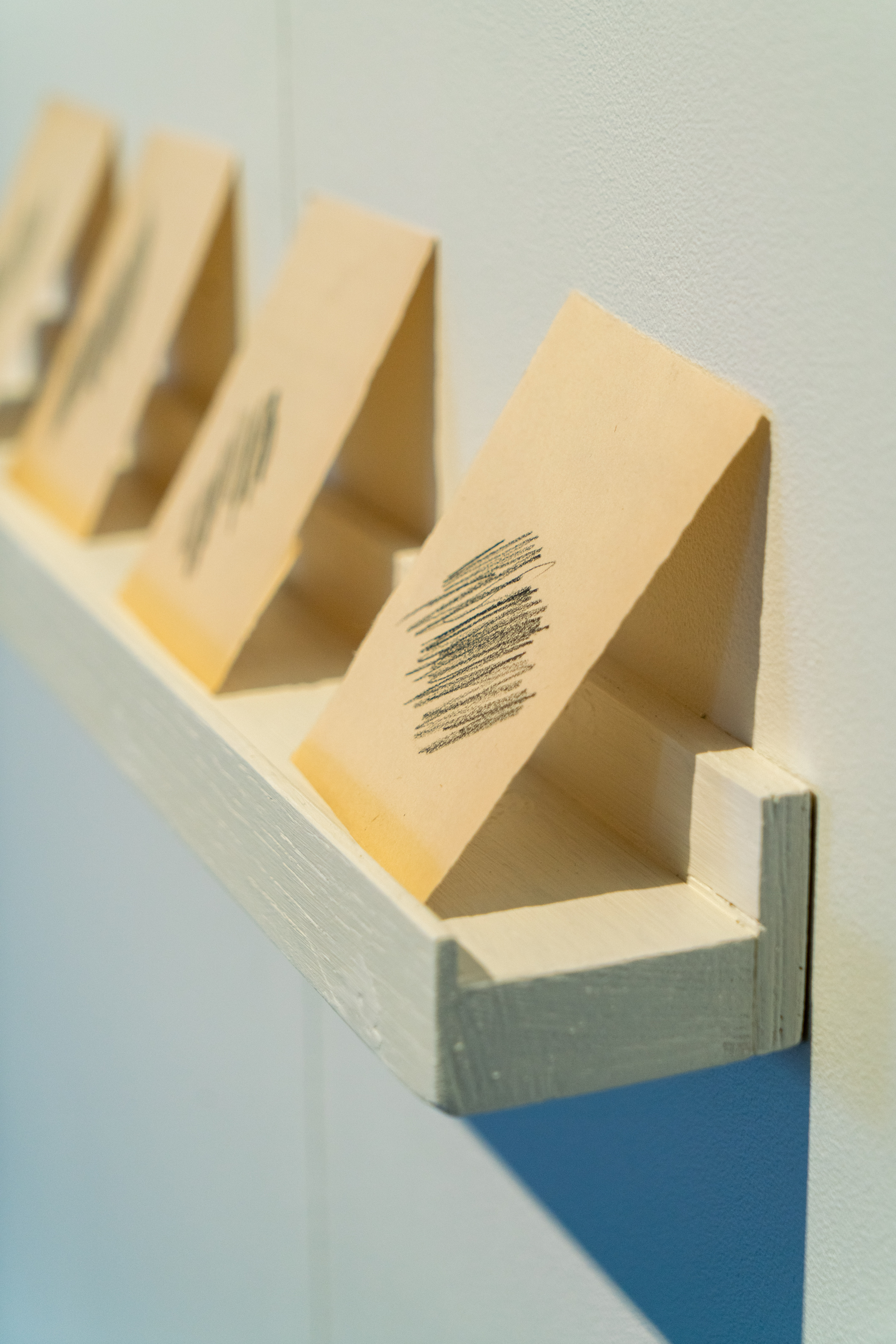
Trine Struwe
Notes
Materials: Patinated bronze
Based on the air columns inside flutes, Struwe explores the potential of the vibrating, invisible void where voices form.
The air columns are cast in wax, aligned and then recast in bronze as a tangible form of an otherwise invisible sound space. The air columns are multiplied and put together to form new, fictional sound spaces – invisible instruments for many hands.
Notes
Materials: Patinated bronze
Based on the air columns inside flutes, Struwe explores the potential of the vibrating, invisible void where voices form.
The air columns are cast in wax, aligned and then recast in bronze as a tangible form of an otherwise invisible sound space. The air columns are multiplied and put together to form new, fictional sound spaces – invisible instruments for many hands.


Axel Burendahl
Compartmentalize
Materials: Jesmonite
“Compartmentalize” explores the mental and physical ways in which we try to declutter. The work consists of two casts of a windbreaker placed one step apart from each other. The windbreaker is folded according to instructions from YouTube tutorials – videos that help people optimise their wardrobe or suitcase space.
Compartmentalize
Materials: Jesmonite
“Compartmentalize” explores the mental and physical ways in which we try to declutter. The work consists of two casts of a windbreaker placed one step apart from each other. The windbreaker is folded according to instructions from YouTube tutorials – videos that help people optimise their wardrobe or suitcase space.


Niels Munk Plum
GREEN
Materials: Performance, songbook, tape
One Thursday in May, we gather in a circle and sing the darkness away.
“Green” is a performance and song session created to connect and build hope, rooted in Plum's own use of song as a tool for processing anxiety and grief. The work challenges stereotypes about when and how we sing together.
As an intention for the day, participants meet in a circle where they performatively welcome back summer and light.
GREEN
Materials: Performance, songbook, tape
One Thursday in May, we gather in a circle and sing the darkness away.
“Green” is a performance and song session created to connect and build hope, rooted in Plum's own use of song as a tool for processing anxiety and grief. The work challenges stereotypes about when and how we sing together.
As an intention for the day, participants meet in a circle where they performatively welcome back summer and light.


Ditte Holm Bro, Liv Duvå, Stina Vogt, Anna Rieder, Ana Sidsel Welden, Olivia Lund
We are all equally small when lying down
Materials: Text, bed, patchwork
Anna Rieder, Ana Sidsel Welden and Olivia Lund’s tenderness-activist rest room with bed, previously displayed at the
National Centre for Art and Mental Health In Denmark, is now home to the new installation “We are all equally small when we lie down”.
The soft bed gives the audience the opportunity to lie down and read texts from authors Ditte Holm Bro, Liv Duvå and Stina Vogt, who have each written about being an ally and the difficult nature of hope.
We are all equally small when lying down
Materials: Text, bed, patchwork
Anna Rieder, Ana Sidsel Welden and Olivia Lund’s tenderness-activist rest room with bed, previously displayed at the
National Centre for Art and Mental Health In Denmark, is now home to the new installation “We are all equally small when we lie down”.
The soft bed gives the audience the opportunity to lie down and read texts from authors Ditte Holm Bro, Liv Duvå and Stina Vogt, who have each written about being an ally and the difficult nature of hope.


